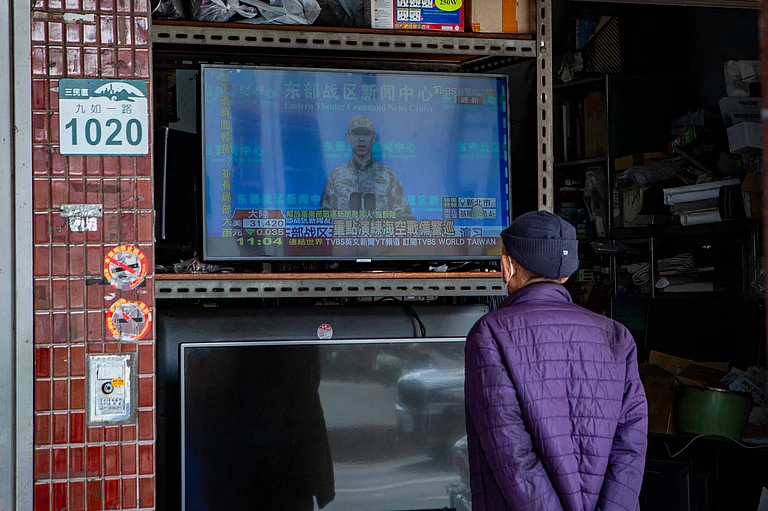China's third aircraft carrier, the Fujian, the most advanced homemade warship, began its maiden sea trials on Wednesday as Beijing ramped up its naval power amid increasing tensions with the US in the disputed South China Sea and Taiwan Strait.
The ship left Shanghai Jiangnan Shipyard on Wednesday morning for the sea trials, primarily to test the reliability and stability of the aircraft carrier's propulsion and electrical systems, the state-run Xinhua news agency reported.
Since its launch in June 2022, the Fujian has completed its mooring trials, outfitting work and equipment adjustments. It has met the technical requirements for sea trials.
Ahead of the trials, China has imposed maritime traffic controls around the mouth of the Yangtze River where the Jiangnan shipyard ship is located for "military activities".
The traffic controls would last till May 9, the report said.
According to the previous official media reports, China plans to have five to six aircraft carriers by 2035 for strategic deployment in the disputed South China Sea, where Beijing seeks to assert its claims over most of the vast area, the Taiwan Strait which separates the Chinese mainland and Taiwan and the Indian Ocean where Beijing is increasing its power projection.
Elaborating on China's strategy in acquiring aircraft carriers, Senior Col. (rtd) Zhou Bo, who spent four decades with the People's Liberation Army (PLA), said China sees their importance for possible war far from home.
"I cannot speculate on how many carriers China will need. But I can tell you that aircraft carriers are primarily not for coastal fights. They are for a possible war far from home," Bo, who is a senior fellow with the Centre for International Security and Strategy at Tsinghua University, told the Hong Kong-based South China Morning Post in a recent interview.
"People may say that one day, when China has to retreat from peaceful means to resolve the Taiwan issue, we could use aircraft carriers," he said.
"Of course they are useful, but they are more useful in our power projection in the Pacific Ocean, Indian Ocean, or Atlantic Ocean – anywhere far from our waters – because they are platforms for the ships and aircraft that make us powerful," he said.
Currently, the Chinese navy is involved in a standoff with the US-backed Philippines naval ships in the South China Sea.
The Philippines is trying to assert its claim over the Second Thomas Shoal in the South China Sea which is strongly resisted by China.
China claims most of the South China Sea. The Philippines, Malaysia, Brunei and Taiwan have counterclaims.
China names its aircraft carriers after its provinces. Fujian borders the Taiwan Strait. The other two carriers were named after Liaoning and the Shandong provinces.
China's first aircraft carrier, the Liaoning, was a refit of the Soviet-era ship commissioned in 2012 followed by the indigenously built 2nd aircraft carrier Shandong in 2019.
Chinese official media said Fujian is the "first fully domestically developed and constructed" aircraft carrier with an electromagnetic aircraft launch system (EMALS) similar to that of the American aircraft carrier USS Gerald R. Ford.
Fujian has a full displacement of more than 80,000 tonnes, about 20,000 tonnes more than the other two aircraft carriers.
China's other two aircraft carriers are equipped with ski-jump take-off ramps while the Fujian features a flat-top flight deck.
China operates its indigenously built J-15 aircraft for its carriers.
In a major rejig of its military doctrine, China in 2013 stepped up the development of the navy with a massive budget while cutting down the number of army troops as part of its power projection far from its shores.
The modernisation included building several aircraft carriers besides submarines, frigates and assault ships as part of its efforts to expand its global influence.
According to an estimate, China is building almost a naval ship a month. It is helping Pakistan to modernise its navy by providing its latest naval frigates and submarines.


























